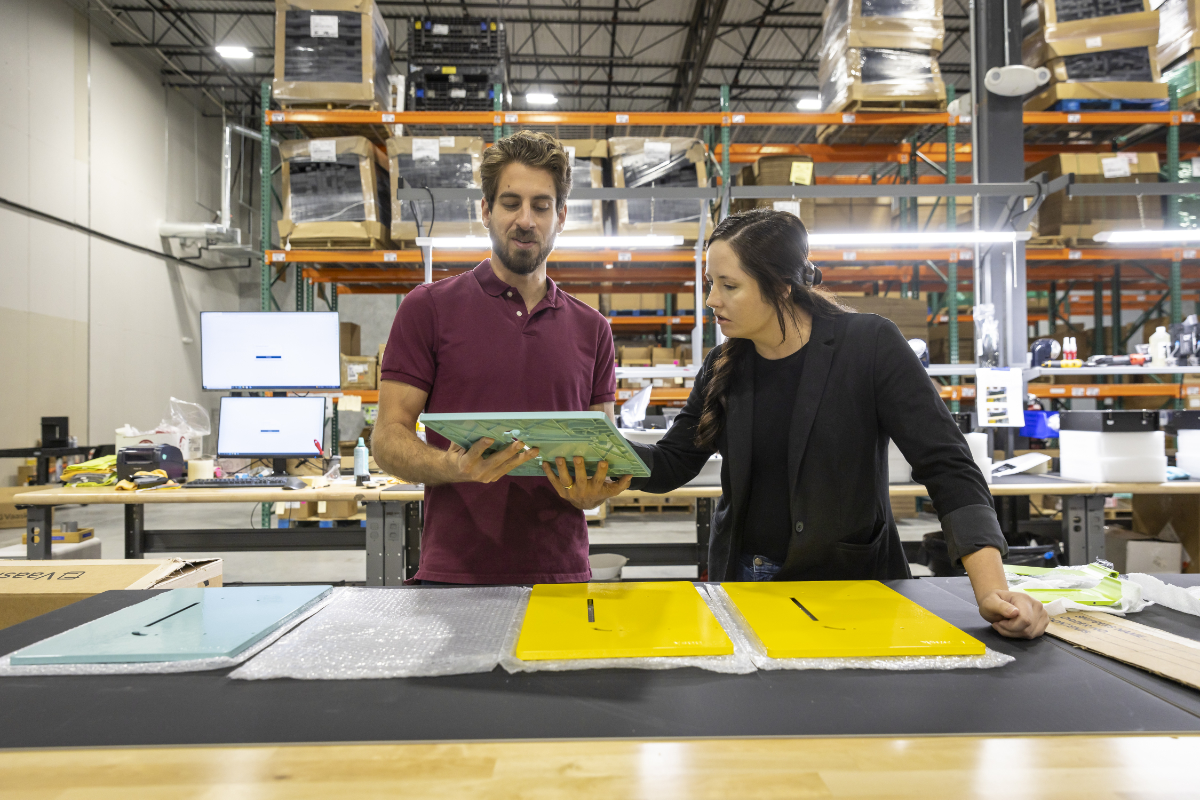
Jon Olsen
1. Please give us a brief bio of yourself and your design background.
With a background in engineering, I enjoy tackling seemingly insurmountable problems. Before founding hand hygiene company Vaask
2. What made you become/why did you choose to become a designer/artist?
Ever since childhood, I
3. Tell us more about your agency/company, job profile, and what you do.
In early 2020, as the pandemic took hold, I grew frustrated by the hand sanitizing experience. Now more important than ever, hand sanitizer was a design failure on every level with always-empty automatic dispensers, drips and messes everywhere, and a reliance on single-use plastic bottles. With the help of the team at Unorthodox Ventures, I developed Vaask as a touchless hand sanitizing fixture.
At the core of Vaask
4. What does “design” mean to you?
Solving problems in an elegant way.
5. What’s your favorite kind of design and why?
Definitely three-dimensional design and sculpture. I enjoy the physical, as well as the hands-on process that comes with building something. My engineering background also influences my art with the goal of always being practical.
6. To you, what makes a “good” design?
Considering all the factors that matter. Beyond an elegant appearance, good product design solves problems.
7. How did you come up with the idea for your award-winning design?
The first step in design should always be identifying a real problem to solve and not just focusing on something that needs to look better. With Vaask, the process began by realizing that hand sanitizing needed a complete overhaul and then determining the many individual failures of the experience at that time.
8. What was your main source of inspiration for this design?
In designing and developing Vaask, I consulted with architects, designers and healthcare professionals throughout the process to ensure Vaask addressed all of traditional sanitizer
9. Do you think your country and its cultural heritage has an impact on your design process?
America has such a rich history of industrial design. It
10. Congratulations! As the winner of the London Design Awards, what does it mean to you and your company and team to receive this award distinction?
It
11. Can you explain a bit about the winning work you entered into the London Design Awards, and why you chose to enter this project?
The pandemic saw the dramatic expansion of sanitizer dispensers in public spaces, but design failures prevented or discouraged many from using them. Automatic dispensers, when they even have sanitizer, create messes with poor infrared sensors. Single-use plastic bottles require touching and often look unsanitary. And harsh chemical ingredients and foul-smelling formulations turn many off.
Designed to permanently replace the endless array of single-use plastic hand sanitizer bottles and always-empty automatic dispensers, Vaask is the superior solution for hand hygiene.
12. What were the main challenges you faced during the design process, and how did you overcome them?
We set out to use only American suppliers and manufacture Vaask here in Austin, Texas. While we accomplished that goal, the diminishing number of American manufacturers lengthened the design process and proved frustrating at times.
13. How do you think winning this award will impact your future as a designer?
It
14. What are your top three (3) favorite things about the design industry?
Designers exhibit fearlessness, aspiration and the kind of optimism that you typically see only in entrepreneurs.
15. What sets your design apart from others in the same category?
Behind each of Vaask's differentiating features is a focus on advanced technology, designed to create a reliable experience. Vaask incorporates a high-end stepper motor and peristaltic pump, ensuring that it dispenses the correct amount of sanitizer every time. Also, Vaask
16. Where do you see the evolution of design industry going over the next 5-10 years?
Ideally it would be a stronger focus on repairability with more products designed for forever rather than planned obsolescence.
17. What advice do you have for aspiring designers who want to create award-winning designs?
Never be afraid to do something that other people aren
18. What resources would you recommend to someone who wants to improve their skills in the design industry?
Trying something out for yourself is the best way to begin honing your skills.
19. Tell us something you have never told anyone else.
In college, I studied to become an environmental engineer, but after spending eight months testing emissions at a number of chemical plants, I realized that
20. Who has inspired you in your life and why?
My grandfather worked as a successful entrepreneur in the communications field building a company focused on microwave dishes. Up until the early 2000s, you could see his green microwave dishes all around the country.
21. What is your key to success? Any parting words of wisdom?
Never assume someone understands what you


